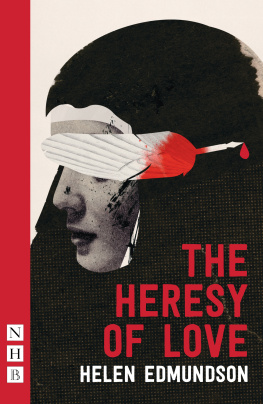The International Library of Sociology
TRANSFORMATION SCENE
Founded by KARL MANNHEIM
The International Library of Sociology
THE SOCIOLOGY OF DEVELOPMENT
In 18 Volumes
| I | Caste and Kinship in Central India | Mayer |
| II | Economics of Development in Village India | Haswell |
| III | Education and Social Change in Ghana (The above title is not available through Routledge in North America) | Foster |
| IV | Growing up in an Egyptian Village | Ammar |
| V | India's Changing Villages | Dube |
| VI | Indian Village | Dube |
| VII | Malay Fishermen | Firth |
| VIII | The Mende of Sierra Leone | Little |
| IX | The Negro Family in British Guiana | Smith |
| X | Peasants in the Pacific | Mayer |
| XI | Population and Society in the Arab East | Baer |
| XII | The Revolution in Anthropology | Jarvie |
| XIII | Settlement Schemes in Tropical Africa | Chambers |
| XIV | Shivapur: A South Indian Village | Ishwaran |
| XV | Social Control in an African Society | Gulliver |
| XVI | State and Economics in the Middle East | Bonne |
| XVII | Tradition and Economy in Village India | Ishwaran |
| XVIII | Transformation Scene | Hogbin |
TRANSFORMATION SCENE
The Changing Culture of a New Guinea Village
by
H. IAN HOGBIN
First published 1950
by Routledge
Reprinted in 1998
by Routledge
2 Park Square, Milton Park, Abingdon, Oxon, OX14 4RN
Transferred to Digital Printing 2007
Routledge is an imprint of the Taylor & Francis Group
1951 H. Ian Hogbin
All rights reserved. No part of this book may be reprinted or reproduced
or utilized in any form or by any electronic, mechanical, or other means,
now known or hereafter invented, including photocopying
and recording, or in any information storage or retrieval system, without
permission in writing from the publishers.
The publishers have made every effort to contact authors/copyright holders
of the works reprinted in The International Library of Sociology.
This has not been possible in every case, however, and we would
welcome correspondence from those individuals/companies
we have been unable to trace.
British Library Cataloguing in Publication Data
A CIP catalogue record for this book
is available from the British Library
Transformation Scene
ISBN 0-415-17585-2
The Sociology of Development: 18 Volumes
ISBN 0-415-17822-3
The International Library of Sociology: 274 Volumes
ISBN0-415-17838-X
Publisher's Note
The publisher has gone to great lengths to ensure the quality of this reprint but points out that some imperfections in the original may be apparent
To
J. K. MURRAY
and the other builders
European and native
of the new New Guinea
There is no turning back, even if the were
thought desirable. There is only one-way
traffic in Time.
JAWAHARLAL NEHRU
The Discobery of India
Acknowledgements
My chief debt is to Colonel J. K. Murray, head of the New Guinea Administration since 1945. He made it possible for me to carry out the later stages of the field work on which the book is based and at all times gave me his full support and encouragement. The dedication is a return for what I owe to him and also a tribute to his devotion to the country which he is so ably serving.
In the field I had practical help from Colonel A. A. Conlon, sometime Director of Research and Civil Affairs in the Australian Army; from Mr. H. J. Jones, Director of District Services and Native Affairs in the New Guinea Government from 1944 to 1949; and from the successive officers who have been in charge of the Morobe District since 1944Mr. A. Bloxham, Mr. R. Farlow, Mr. A. Roberts, and Mr. H. Niall.
I have to express my thanks also to the Council of the Australian National University. The main part of the MS. was prepared during the period when I held one of its Fellowships. This enabled me to travel overseas and re-examine the problems of culture contact with anthropologists who had been working outside the Pacific area. Discussions with Professor Raymond Firth, Dr. L. P. Mair, and other members of the seminar group at the London School of Economics were of particular value.
Finally, I wish to record my indebtedness to Mr. W. Conroy for supplying the botanical names of the food crops, to Miss M. Turner Shaw for preparing the diagrams and maps, to Miss C. Eppers for rectifying some of my worst lapses from standard English, and to Professor A. P. Elkin, editor of Oceania, and Mr. C. R. H. Taylor, editor of the Polynesian Society's Journal, for allowing me the use of several photographic blocks.
H. IAN HOGBIN
Busama, Territory of New Guinea
January 31, 1950
Contents
Illustrations
MAPS
| Territory of New Guinea, Papua, and the Solomon Islands |
| Huon Gulf, Language Distribution |
Chapter One
WAR
They brought the elephant of Asia to convey the artillery of Europe to dethrone one of the kings of Africa, and to hoist the standard of Saint George upon the mountain of Rasselas.BENJAMIN DISRAELI, moving a vote of thanks in the House of Commons to Sir Robert Napier's army after the Abyssinian campaign in 1868.
T HIS is a descriptive study of the village of Busama, which is situated on the upper part of the west coast of the Huon Gulf, north-eastern New Guinea. I have known it well since 1944, at the height of the recent war, when the people were suffering acute hardships. Their dwellings had been bombed, their goods destroyed, their livestock killed, and their agricultural work suspended. Not until the beginning of 1950 was physical rehabilitation complete and the settlement normal.
But the clash of the opposing armies was not the natives' first taste of the modern world. Europeans entered the area before 1900, and for two generations the old way of life was being steadily modified. Government officers stamped out raiding and introduced a different set of laws ; missionaries preached the Christian religion and established a church and a school; labour recruiters took the young men away to work in distant places; and traders operated stores in the neighbouring towns where cash earned as wages could be exchanged for tools more effective than those made of stone and volcanic glass.











